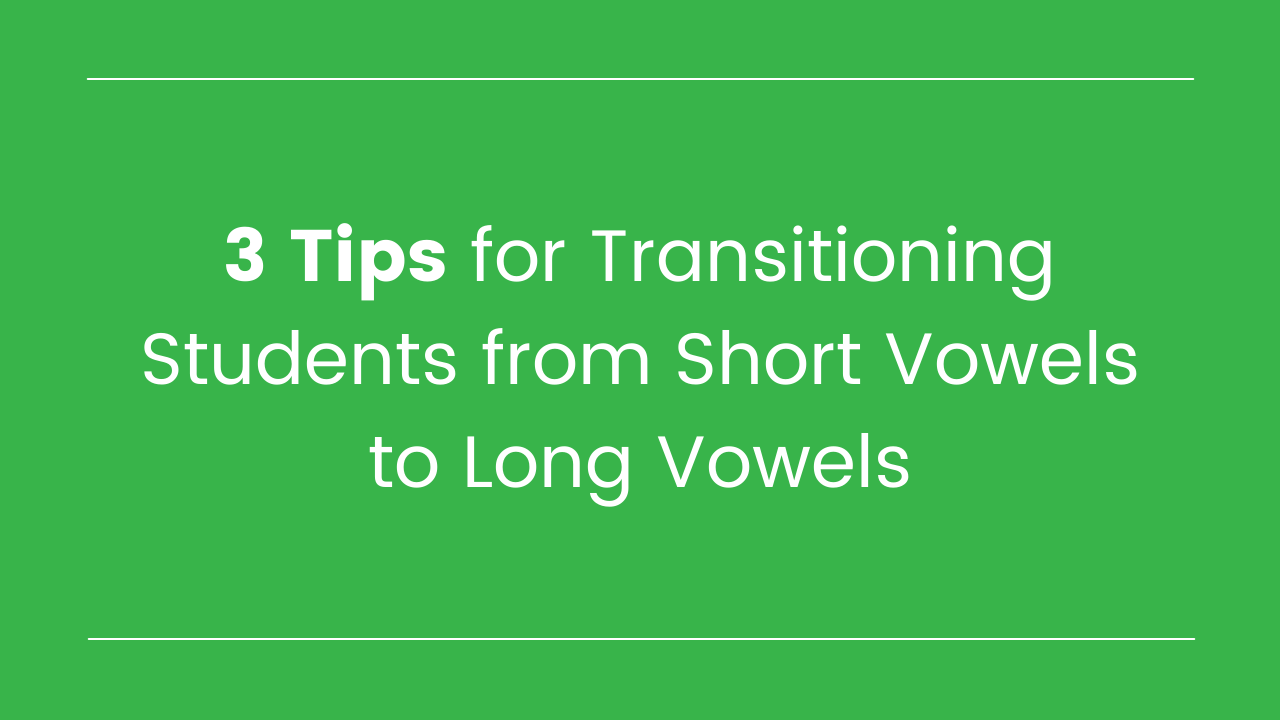
3 Tips for Transitioning Students from Short Vowels to Long Vowels
After children master the short vowel sounds (i.e. the sound the letter a represents in "hat" or the sound the e represents in "sled"), it's time to move onto long vowels!
Some phonics programs (like From Sounds to Spelling) start by teaching students long vowels spelled with silent e (for example: the long i in "bike" or the long o in "stone").
Working with silent e words is a great way to dive into long vowels! But simply shifting to practicing silent e words isn't always enough to set students up for success.
Challenges with Transitioning from Short Vowels to Long Vowels
When kids first begin learning about long vowels, vowel confusion can arise.
An example of vowel confusion is when a student begins to read CVC words - like "nod" - with a long vowel - "node."
The student successfully read CVC words in the past, so it might seem strange that they're suddenly struggling!
What's happened is that their new learning about long vowels hasn't been fully solidified. They now know about the long vowel sounds, but they don't yet know when to apply them. Hence the vowel confusion!
This is absolutely normal, but there are steps we can take to help students quickly move beyond this!
Tip #1: Focus on sounds before spelling.
In our phonics program, we introduce the long vowel sounds at the end of Kindergarten (if teachers get to it - not all Kindergarteners will be ready for long vowels), and then again in first grade.
In each grade level, we actually spend a full week on the long vowel sounds, before we dive into spelling long vowels with silent e.
We do activities like:
- "Thumbs up / thumbs down" games, where students indicate whether they hear a target long vowel sound (i.e. long i) in a word spoken aloud by the teacher
- Picture sorts (for example, pictures with short a and pictures with long a)
- Learning a long vowel song (find it at this link)
It's important for students to be very familiar with the sound of each long vowel before you dive into different ways to spell the long vowel sounds.
Tip #2: Build on students' existing sight word knowledge with long vowel words.
Guess what? Even if students are new to long vowels, they probably already know some words with long vowels - sight words!
For example, students might know:
go
like
me
All those words have long vowel sounds in them!
Whenever we're teaching any new concept, it's beneficial to begin with what students already know. By pointing out that students already know some long vowel words, the new concept can seem less daunting (and it also becomes more meaningful to them - it "clicks," because they have experience with some long vowel words already).
Here's an example of a word sort from Level 1 of the From Sounds to Spelling phonics program. Students are sorting short and long e words. The long e words are sight words, and the short e words are words they can read using concepts that they've already been taught.

Tip #3: Have students frequently compare short vowel words and long vowel words.
Remember the "vowel confusion" problem I mentioned? Your students - at least some of them - are going to suddenly begin misreading short vowel words!
Again, this is totally normal - but you can help students move beyond this by having them continue to practice short vowel words. They also need to compare and contrast long and short vowel words.
Here's an example game from From Sounds to Spelling where students practice both short a and long a words:

Conclusion
It takes a long time for students to fully master long vowels - specifically, how to spell words with long vowels. Time, practice, and patience are necessary!
To learn more about how From Sounds to Spelling can support you in teaching the vowels and lots of other phonics concepts, click here.




